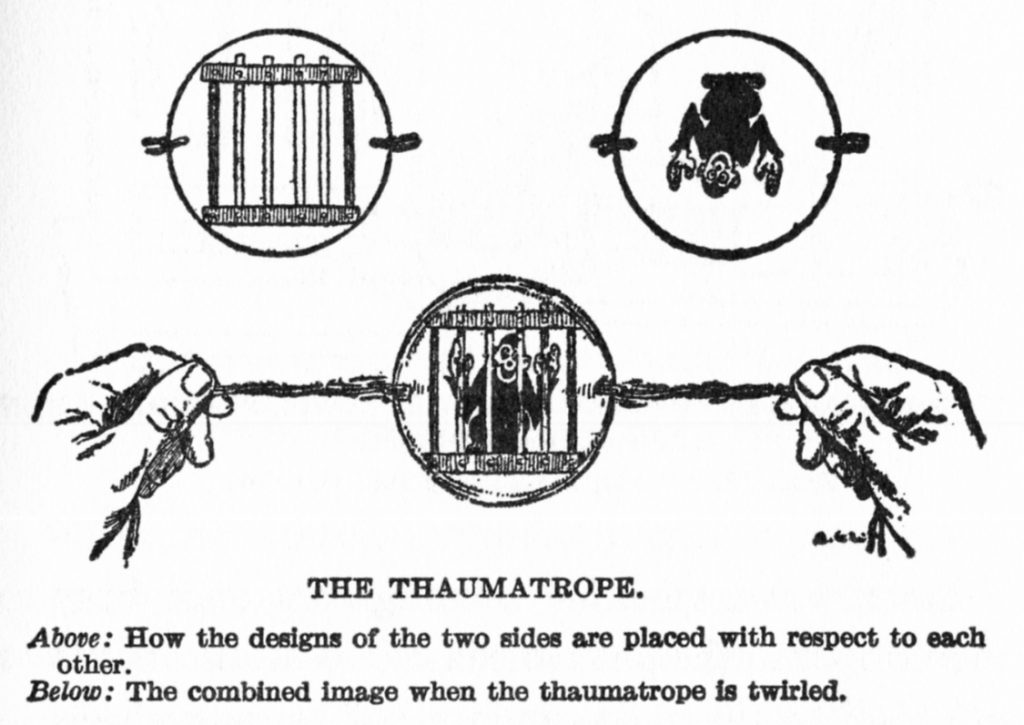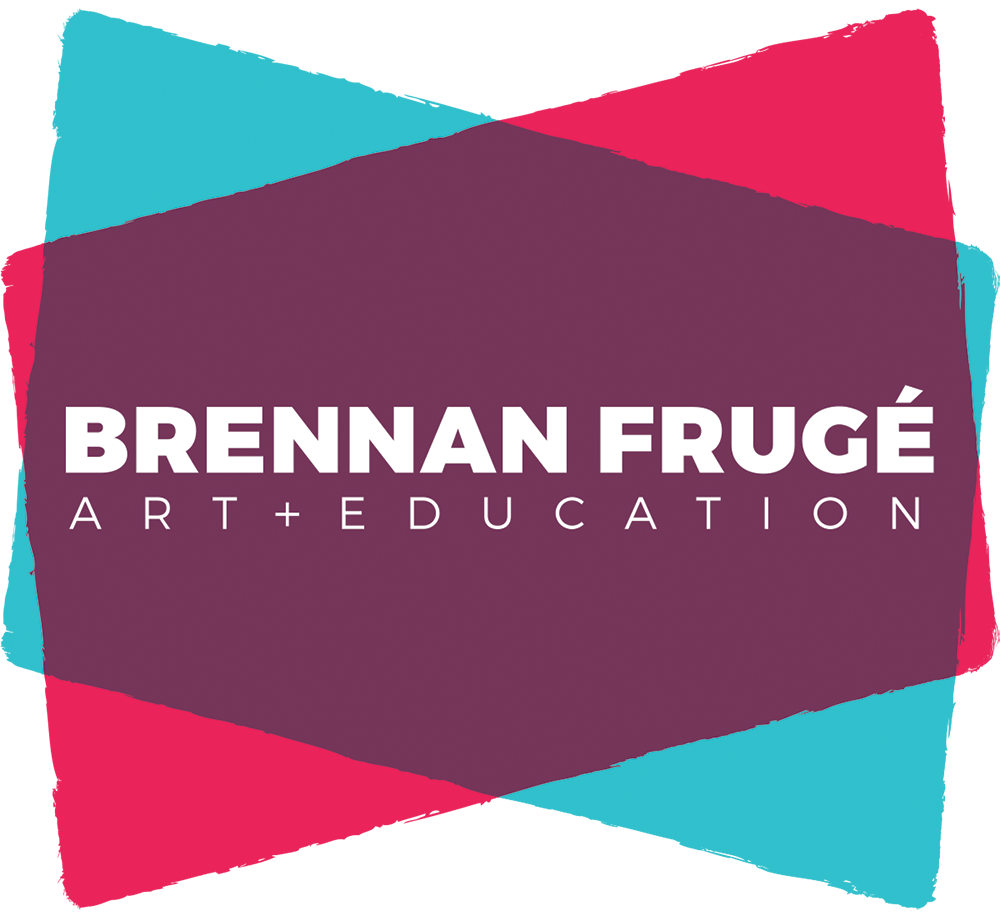This lesson was created in collaboration with my Cooperating Teacher, Mrs. Cacey Narez.
Grade Level
Elementary – Intermediate
Rationale
We live in a world in motion. Through art, and animation specifically, learners can simulate the motion we see in the world with a series of sequential images that they create. The “illusion of life”, a phrase coined by the animation pioneers at Walt Disney, is an essential part of creating engaging animations. Through animation, learners can bring their ideas to life and express themselves in ways they would not be able to with still images alone.
Learners will also learn about why we perceive motion when we view a series of images displayed quickly. Persistence of vision describes the phenomenon where we continue to perceive an image for a very short time after that image has ceased to be projected into our eyes. Because of this phenomenon we are able to perceive a series of images displayed rapidly as motion. Learners will explore this phenomenon and its effects exhaustively by creating their own animation. This will in turn help them to be more visually aware of the motion they see in the world all around them.
Students will participate in an informal critique of their animations during an Animation Showcase. Through critique the students will learn to talk about art, and to think more critically about their own art and art they see. This will in turn help them to be better artists and more visually aware.
Essential Questions
1. When was animation invented?
2. How can we use still images to create the illusion of life?
3. Why do we see motion when we view a series of images displayed quickly?
Objectives
• The student will be able to define animation as a simulation of motion created with a series of many different images.
• The student will be able to create a pixel art animation based off their own ideas, that is 32×32 pixels wide, has at least three colors, and is a minimum of eight frames long
• The student will be able to export their animation as an animated GIF and upload it to a cloud storage service
Synopsis
The lesson will begin with a class discussion about the beginnings of animation. The teacher will ask the students when animation was invented, which will segue into a discussion about animated cave paintings, and the first class activity. Ancient cave paintings often featured multiple drawings of the same animal very close together, or animals with multiple limbs or heads. It is theorized that the flickering firelight in the caves may have created a strobe-like effect resulting in the impression that the animals drawn on the walls were moving.
After that the teacher will describe the phenomenon of persistence of vision and introduce the next activity, which will help to illustrate that phenomenon for the learners. Thaumotropes are an optical illusion toy that rely on persistence of vision to combine two images into one. See an illustration below.

After watching a video with some student examples, the learners will have the opportunity to create their own thaumotropes. The teacher will demonstrate how to use a compass to draw a circle on a 2.5″x2.5″ piece of paper. Then the teacher will demonstrate cutting out the circle, drawing images on either side, punching holes, and tying on the strings.
In the next part of the lesson, the teacher will share a slideshow about pixel art animation techniques, found here. The slideshow begins with two review questions and a pixel art music video for the song Move Your Feet that will serve as inspiration for the lesson. The video should be stopped at 1:55 seconds. After the video, the teacher will show some of the pixel art animation examples created for this lesson, beginning with the bouncing ball image sequence and animation. After viewing the bouncing ball animation, the teacher will demonstrate how to use the Pixel Art Maker iPad app. The learners will then be instructed to create their own bouncing ball animation, using the frame sequence and animation examples as reference.
Once each student has created a bouncing ball animation, they will create another practice animation based off their own ideas. There are no criteria for this second practice animation. After completing the second practice animation, students will then begin working on what will be their final pixel art animation. Included in the Animation slideshow is a slide with a list of criteria for the final animation. When each learner completes their animation, they will export as a 512×512 animated GIF and export that GIF to a cloud storage service, like DropBox.
When all the learner animations are complete the teacher will play all of them for the class during what will be called the Animation Showcase. Students will be encouraged to talk about their own animations and share constructive but positive comments on animations created by others.
Learner Examples
Guided Practice
What is animation? How many images per second are in a typical animation? What are some ideas you saw in the example video? How can we use those ideas and change them to make our own animation? How can we create motion? What other things can we animate? Colors? Scale?
Closure
When five minutes are left in class it is time to clean up. After clean-up, when all the students are waiting quietly, use the Guided Practice questions to lead a brief discussion before ending class.
Assessment
Guided Practice questions will be used as formative assessment during the lesson. If the students are unable to answer these questions, then they will need to be rephrased or simplified in a way that allows the students to demonstrate that learning is taking place. If a student is not clear on what they should be doing, the teacher will sit with them on an individual or small group basis and re-demonstrate the tasks that are required for the day’s lesson again until the student can confidently proceed.
The animations themselves will serve as summative assessment. Their finished animations will demonstrate their ability to create animations, based off their own ideas, that adhere to the criteria presented to them. Summative assessment will also be conducted by the entire class during the Animation Showcase part of the lesson.
Art TEKS
• 117.111 (b)(1)(A) – explore ideas from life experiences about self, family, or community and from the imagination as sources for original works of art;
• 117.111 (b)(2)(A) – integrate ideas drawn from life experiences to create original works of art.
• 117.111 (b)(3)(C) – connect art to career opportunities for positions such as an animators, cartoonists, film makers, graphic artists, illustrators
• 117.111 (b)(3)(D) – investigate the connections of visual art concepts to other disciplines
• 117.111 (b)(4)(B) – use methods such as oral response to identify main ideas found in collections of artworks created by self and peers
National Art Standards
• Anchor Standard #1. Generate and conceptualize artistic ideas and work.
• Anchor Standard #6. Convey meaning through the presentation of artistic work.
• Anchor Standard #8. Interpret intent and meaning in artistic work.
• Anchor Standard #9. Apply criteria to evaluate artistic work.
• Anchor Standard #10. Synthesize and relate knowledge and personal experiences to make art.
